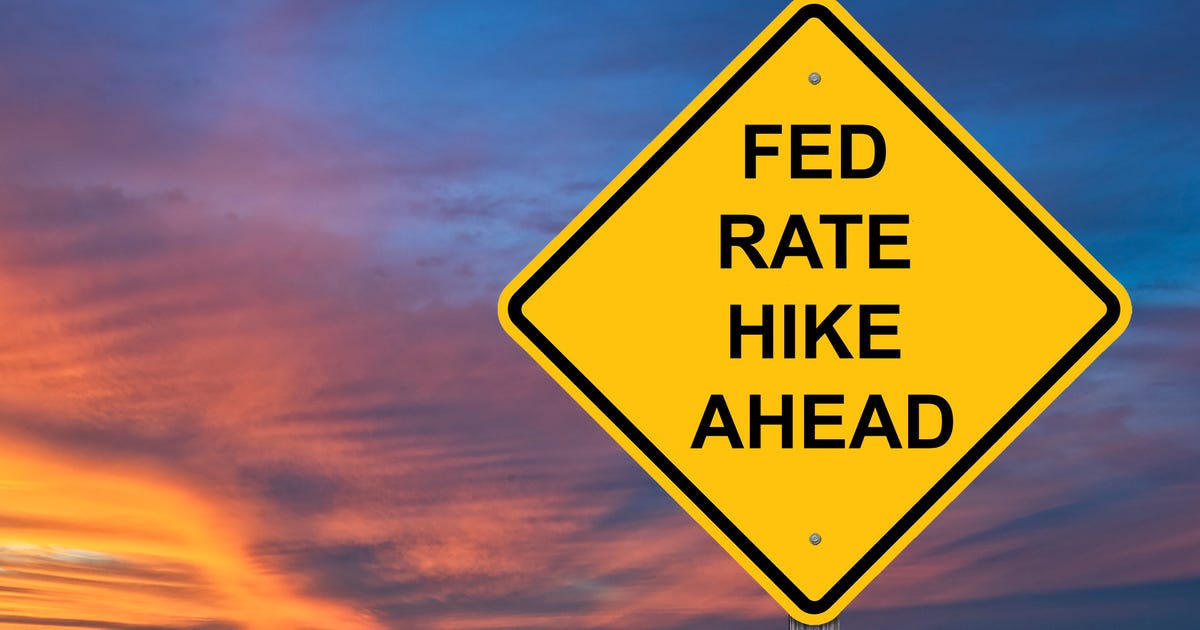
The Federal Reserve plays a central role in the US economy, setting an important benchmark interest rate that can accelerate or cool economic activity. At a high level, these changes can have an impact on employment and the price of goods and services. But they can also impact consumer interest rates attached to savings accounts, money market accounts and CDs.
The Federal Open Market Committee (FOMC) meets eight times a year (or about once every six weeks), to assess interest rate changes. The next meeting is Wednesday, and Fed analysts are predicting an increase of 0.75%, or 75 basis points.
The Fed has raised interest rates four times this year in an attempt to stem inflation from a 40-year high of 9.1% in June “Think of interest rates as an accelerator or a brake,” says Bankrate Chief Financial Analyst Greg McBride, CFA. “Demand is too high relative to supply. That’s led to much higher prices. Now [the Fed] has to press on the breaks. With these repeated rate hikes, they’re not just tapping on the breaks, they’re pressing very heavily,” McBride adds.
How the Federal Reserve influences deposit rates
The Fed sets the federal funds rate, which determines how much banks charge to lend and borrow money. In turn, those rates influence deposit account APYs — those changes do not come overnight. When interest rates increase, APYs typically follow, but over weeks or months.
Though banks generally set their deposit account APYs according to the direction of the federal funds rate, timing and specific rates may vary. “Some big banks are swimming in deposits and they don’t need to pay up to bring in more,” says McBride. As such, there may be rather dramatic differences in account interest rates from bank to bank. “It’s important that consumers shop around, according to McBride. “The top-yielding CDs are at levels we haven’t seen since 2009. Smaller regional banks, community banks and credit unions may use this opportunity to pay higher rates on savings accounts and CDs.
According to Bankrate, a CNET sister site, the national average APY for a savings account is 0.13% and 0.76% for a 1-year CD. Rates for a 1-year CD top out around 3.2%. Those are much higher than one year ago, but still not enough to keep pace with an inflation rate of 8.3%. Still, it’s a good time to assess your savings rate and look for opportunities.
How much higher will rates go?
That, of course, is the $64,000 question (or $69,312 question, if you factor in the current 8.3% rate of inflation). In August, New York Federal Reserve President John Williams, in a live interview with the Wall Street Journal, spoke to the strength in the economy and cited an imbalance between supply and demand that was driving high inflation. “As we come to the next meeting, we’ll be weighing all the factors and coming to a decision about what the right setting of policy is. Looking back, there was a need to get interest rates higher to slow demand,” Williams said in the Wall Street Journal interview.
Nearly all economists are expecting another rate hike on Wednesday, according to a Reuters poll. Nearly 60% expect a 75 basis-point (0.75%) increase; the others predict a 50 basis-point jump. That would lift the federal funds rate range to at least 3.0% — which would be the highest rate since 2008, just before the financial collapse.
McBride believes that the Fed will make additional increases through the remainder of this year, as it attempts to bring inflation under control. “Inflation is public enemy number one. It’s easy to raise rates when interest rates are low,” he says. “[It] becomes a lot tougher if unemployment is moving up. That’s why you’re seeing them frontload as much as they can now.”
Tips for finding the right savings account or CD as rates rise
Keep in mind that larger, brand-name banks with larger marketing budgets are not the only ones to offer competitive rates on savings accounts and CDs. Community or regional banks, credit unions, and online-only banks often offer higher rates on deposit accounts to attract new customers.
“[Savers] need to think carefully about which savings accounts or CDs [to open],” wrote Baruch Silvermann, CEO of The Smart Investor, in an email to CNET. “With such uncertainty, it may not be a good idea to tie your money for a longer term. You are likely to want the flexibility to be able to move your money fairly freely when a better opportunity arises.”
“[If] you’re looking at CDs, concentrate on shorter terms, so you can reinvest or move your money when they mature. Alternatively, you could choose a longer-term CD if there is no withdrawal penalty,” Silvermann adds.
The best high-yield savings offer APYs between 2% and 3%, low fees and no minimum balance requirements and the best CD rates are around 3.0%. When evaluating a savings account, make note of any fees associated with opening or maintaining an account. You should also compare APYs and how easily you can access your money before making your decision. CD rates vary widely based on the institution and term.
CDs offer a safe, fixed-rate of growth – as long as you can leave the funds in the account until the maturity date. Terms can last anywhere from three months to five years or more. Before opening an account, confirm that your deposit is insured by either the Federal Deposit Insurance Corporation (FDIC) or National Credit Union Administration (NCUA) for up to $250,000.
Bottom Line
It’s highly likely that more interest rate hikes are coming as the Fed attempts to rein in inflation. While the inflation rate has dropped slightly since its 40-year historic high of 9.1% in June, the rate is still four times higher than the Fed’s target of 2%. But climbing rates present an opportunity to capitalize on higher APYs to help you offset inflation.

